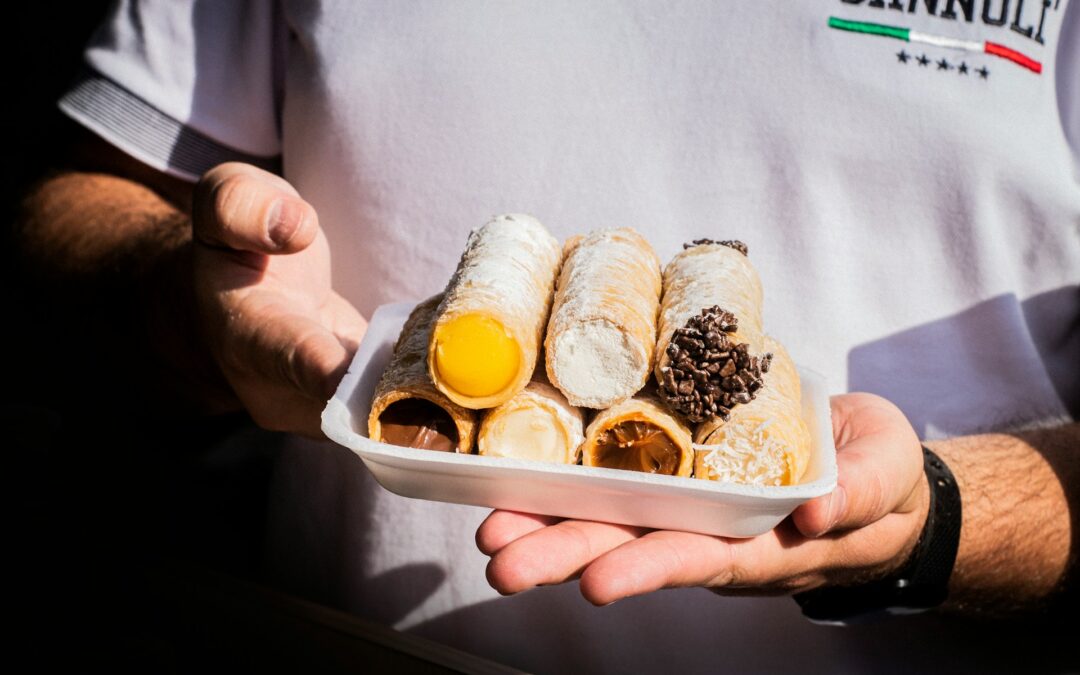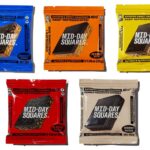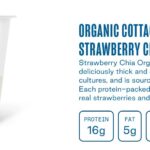Launching a food brand is ridiculously difficult.
In the beginning, you have all the jobs and all the things to do. And for newbies, it is a frightening array of acronyms and challenges.
Energy radiates from startup food founders—the kind that comes from passion, purpose, and often, a beloved family recipe or a belief that they can do it better than what’s on the shelf today.
That energy is a beautiful thing.
But energy alone doesn’t build brands.
Discipline, strategy, and well-timed decisions do.
Year one can make or break a food brand.
While every founder’s journey is different, I believe every food entrepreneur should take some foundational steps—practical, proven, and often overlooked. These aren’t just tips but the bedrock of building a lasting brand.
The following advice is based on my lived experience building a successful food brand with my wife and advising dozens of food and beverage startups.
Launching a Food Brand – The Slow Journey
1. Start with a Name You Can Own
Let’s begin with something deceptively simple: your name.
Too many founders fall in love with a brand name before doing the legal homework. That’s a mistake. Do a trademark search before you print your first label or register your Instagram handle. Over the last three years, I worked with four start-ups that made this mistake.
Work with an IP attorney once you have a few names you like.
You want to know—not guess—that the name is protectable in your category and geography. This protects your future. It signals professionalism. And it saves you from painful rebranding after you’ve invested in packaging, shelf talkers, and building a reputation.
A trademark attorney can’t guarantee you’ll get the mark, but they can help improve your odds by seeing if there is an apparent conflict.
Once you file to register your trademark with the trademark office, it will take about six months to see if you get that name.
In year one, your brand identity is fragile. Build it on solid legal ground.
2. Build the Brand Before You Broadcast
Your logo is not your brand. Neither is your tagline, color palette, or font. Simply put, your brand is a promise.
Your brand is the sum of what people feel, believe, and expect from you—and that is built through every interaction: your packaging, your shelf presence, your price point, your customer service, and in-store demos.
In year one, you’re not building a brand to impress investors. You’re building one to earn repeat customers.
Think about positioning your brand to be distinctive from the category. It can be tangible (more protein) or mission-driven, giving back to a specific non-profit community. How will you answer the question – how are you different? Why should I buy from you?
Clarity is everything. Who is your product for? What does it do differently or better than anything else on the shelf? Why does it matter? You should be able to answer these questions in 10 words or less. That clarity will become your north star across design, sales, and marketing.
Most critically, do consumers truly love the taste of your brand?
Exposing your brand to thousands of consumers at demos, sampling, and festivals will help you build confidence that you have something special.
Before building a brand, you better convince yourself you have something amazing based on first-hand feedback from hundreds, if not thousands, of consumers.
Taste is always the gateway to building a brand consumer’s love.
3. Grow Slow to Prove the Sell-Through
Every founder dreams of getting into Whole Foods, Sprouts, or Kroger. But speed can be a trap. Here’s the hard truth: distribution is not traction. Getting on shelves is easy compared to staying there.
The best way to demonstrate product-market fit is to sell through—not just in.
Start with 10–20 independent retailers. Nail your pricing. Listen to feedback. Run in-store demos. Watch what moves and what doesn’t. Use this time to gather data on velocity, reorder rate, margin, and promo response. This is your R&D in the real world, not in a lab or kitchen, but with actual paying customers.
Slow growth builds operational muscles. It helps you forecast. It shows buyers you’re serious about execution.
Launching a food brand requires a methodical approach in year one. It isn’t a race but a proving ground.
4. Price with the Future in Mind
In year one, pricing feels like a moving target. You’re paying more for ingredients, co-manufacturing, shipping, and packaging.
The temptation is to price low to drive trial. However, act cautiously because a healthy gross margin is needed to support a brand.
Yes, you need to be competitive, but if the category is priced at $6.99, you would have a remarkably better product to sell for $9.99
Price for your long-term margins.
It isn’t easy to get a second chance to reset expectations, but you can test and learn at different locations.
Yes, you can offer promotions and incentivize trials. But your base price must reflect your actual cost structure, with room for trade expenditure, retailer margin, and profit.
Smart buyers (and savvy investors) will ask, “Can this brand scale profitably?”
Please don’t make them do the math for you.
Show them you’ve already done it.
5. Treat Retailers Like Partners, Not Gatekeepers
Independent store buyers are your first and most important allies. They are close to their customers. They want products that bring in something new and exciting. And they’re often willing to take risks if they believe in your story and hustle.
Respect their time. Show up with sell sheets, samples, and a clear pitch. Bring data. A short video of consumer testimonials on your phone can be an effective too to stir up some energy with the buyer/owner.
Deliver on your promises, follow up, and bring value through sampling, social support, or thoughtful promos.
These independent accounts become proof points when you eventually go to regional or national chains. Their buyers will ask: “Where are you selling today? What are your velocity or sell-through rates?
Are you bringing incrementality to the category?” Your early retail partners give you the credibility to answer with confidence.
6. Document Everything—Because Storytelling Accelerates Opportunities
In your first year, everything is happening for the first time: your first production run, your first pallet shipped, your first sell-out week, your first loyal customer.
Capture it for social media, pitch decks, website, and future interviews. Your origin story isn’t a one-time bio—it’s a growing narrative. And your future customers (buyers and investors) want to see where you come from and how far you’ve come.
Year one is rich with story. Use it to build connections and trust. If you can’t do it yourself, hire someone to help make a brand on social media and focus on one channel like Instagram. Help promote your brand and your retail partners. You can also use social media storytelling to create small partnerships with other brands where the partnership makes sense.
7. Invest in Relationships Before Ads
Marketing dollars are precious in year one. And while performance marketing has its place, your most significant returns will come from word of mouth, relationships, and physical presence.
Do the demos, send the samples, show up at the trade shows—even if to walk the floor—network with other founders, brokers, and buyers, and be memorable for the right reasons: humility, hustle, and heart.
Back in the 70s and 80s, way before social media, we used to send our brownies to local media to get a bit of publicity. It worked like a charm. Since we were in Philadelphia, we have donated Rachel’s Brownies to Terry Gross’ show on NPR, Fresh Air as a part of their fundraisers. People from local TV, newspapers, and magazines always heard about us.
Authenticity isn’t a campaign. It’s how you show up every day. Don’t pay for ads – focus on social media storytelling.
Final Thought: Play the Long Game
The brands that break through are rarely the ones that raise the most or launch the flashiest campaign. They’re the ones that make smart, steady progress, build trust before the hype, and prove their value shelf by shelf, week by week. They understand how to generate interest, awareness and that elusive buzz factor.
Launching a food brand is hard, grueling work.
In year one, your job isn’t to scale. You are launching a food brand that requires tremendous effort, energy, and enthusiasm.
It’s to learn, listen, and lay the groundwork for a business that can.
Because momentum is earned—and when done right, it becomes your greatest asset to achieve your goals.
Photo by Abstral Official on Unsplash
This post is written by a food entrepreneur who built a successful multi-million-dollar business from scratch, It took my wife and I thirteen years to get to a successful exit. I have done what I am recommending. If you need help, let’s talk. Connect with Jeff at The Marketing Sage Consultancy. Interested in setting up a call with me? Use my calendly to schedule a time to speak. The call is free, and we can discuss your brand and marketing needs.
If you want to learn more about my new offering, The Trusted Advisor Board, you can click here to learn the details. Feel free to email me at jeffslater@themarketing sage.com or text 919 720 0995. Thanks for your interest in working with The Marketing Sage Consultancy.





